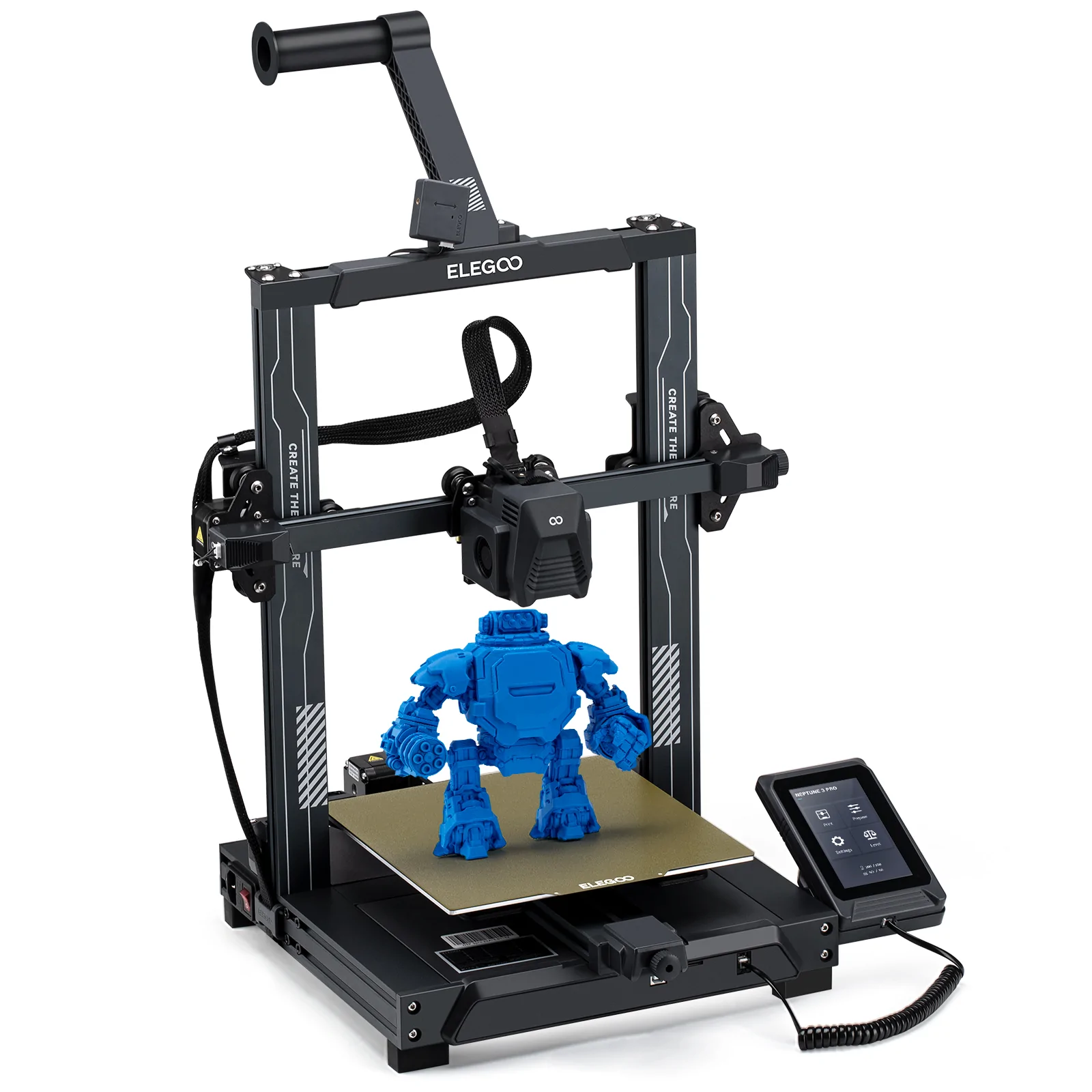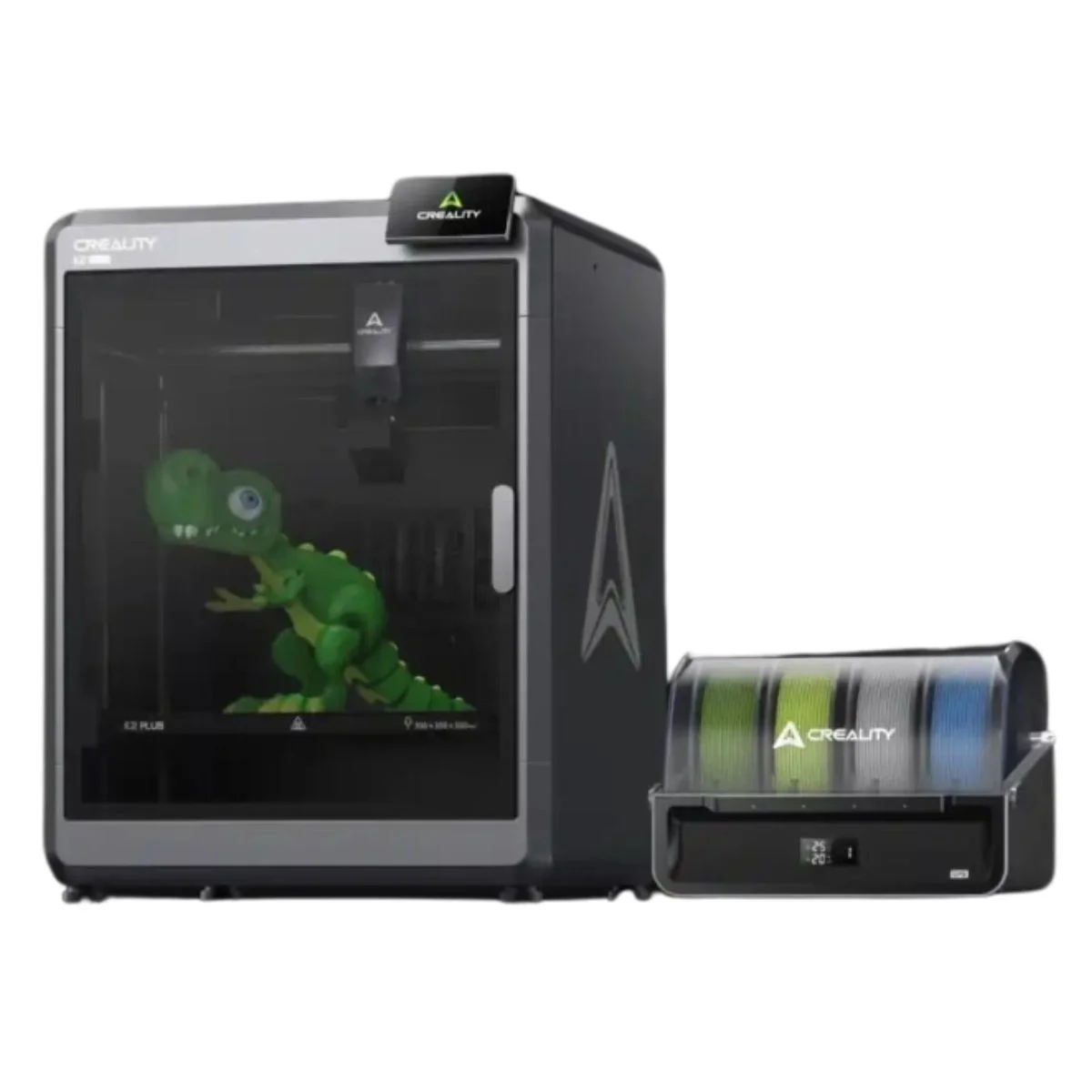Compare Neptune 3 PRO vs K2 Plus
Comparison between the best 3D printers
Choose the best 3D printer at the best price. The cheapest 3D printers are here.
Buy a 3D printer here with 3D Fila.
 |
 |
|
| Model | Neptune 3 PRO |
K2 Plus[BUY K2 Plus] |
| Printing Material | Filament | Filament |
| Buy Filament for Elegoo Neptune 3 PRO | Buy Filament forCreality K2 Plus | |
| Estimated price | $230,00 | $1500,00 |
| Manufacturer | Elegoo | Creality |
| Release Year | 2022 | 2024 |
| Print Volume [mm] | 225x225x280 | 350x350x350 |
| Printer Size [mm] | 445x515x475 | 495x515x640 |
| Weight [kg] | 8,1 | 33,5 |
| Power Loss Recovery | YES | YES |
| Enclosed printer | NO | YES |
| Bed Leveling | Automatic | Automatic |
| Filament End Sensor | YES | YES |
| Bed type | Heated | Heated |
| Power supply system | Direct Drive | Direct Drive |
| Standard nozzle | 0,4 | 0,4 |
| Maximum Nozzle Temperature [°C] | 260 | 350 |
| Maximum Bed Temperature [°C] | 100 | 120 |
| Maximum printing speed [mm/s] | 80 | 600 |
| Filament holder | YES | YES |
| Camera for supervision | NO | NO |
| Recommended filaments | PLA, PETG, Tritan, Flex, ABS | PLA, PETG, PET, TPU, PA, ASA, PC, PLA CE, PA-CF, PET-CF |
| Recommended slicers | Cura, Simplify, Slic3r, IdeaMaker e outros | Creality Print 5, Bambu Studio, Super Slicer, Cura, Prusa Slicer, Orca Slicer |
| Maximum Resolution [mm] | 0,1 | 0,1 |
| Processor | ||
| Display | Display touchscreen 4,3'' | Touchscreen 4,3'' |
| Power Supply | 250 | 1200 W |
| Connectivity | USB / WIfi | |
| Operating systems | Windows, Mac, Linux | Windows, Linux, Macbook |
| Date of registration in the system | 2023-03-02 | 2024-06-26 |
| Release date | 2022 | 2024 |
| Extra features | The Elegoo Neptune 3 Pro printer stands out for its easy assembly and automatic bed leveling, ideal for different levels of users. Equipped with a direct-drive extruder and dual gears, it offers excellent adhesion to slippery materials such as TPU. It incorporates dual screws on the Z-axis, ensuring stable prints, and features an integrated task light for improved visibility. With a PEI-coated build plate and a detachable touchscreen, it combines functionality and convenience. The printer also features an efficient cooling system, filament sensor and a simplified user interface. | The Creality K2 Plus 3D Printer stands out for its multicolor printing, large build volume (350x350x350 mm) and Apus Direct Drive extruder with tri-metal protection nozzle. It features automatic anti-tilt leveling, FOC closed-loop motors and active chamber heating. In addition, it has an intelligent CFS filament management system, cameras for calibration and monitoring, a 4.3-inch touchscreen and advanced sensors to optimize the printing process. |
| Support for multiple colors and materials (AMS and CFS) | NO | YES |
Notes * |
||
| Cost-benefit | 6 / 10 | 7 / 10 |
| Hardware | 2.4 / 10 | 6.4 / 10 |
| Tela | . | . |
| Print volume | 3 / 10 | 4 / 10 |
| Performance | 0 / 10 | 5 / 10 |
| [BUY K2 Plus] |
Conclusion |
| In comparing the Elegoo Neptune 3 Pro and the Creality K2 Plus, it is evident that both printers cater to distinct user needs and budgets. The Neptune 3 Pro, with its more accessible price point, offers an excellent entry-level option for hobbyists or those new to 3D printing. Its features, such as automatic bed leveling, a direct-drive extruder, and a solid build volume, make it a capable printer for a range of materials, including more flexible options like TPU. However, it has limitations in terms of print speed and maximum bed temperature, which may hinder more demanding applications. Conversely, the K2 Plus positions itself as a high-performance solution for professional users or serious enthusiasts. Its significantly larger build volume, advanced multicolor printing capabilities, and enhanced features like active chamber heating and detailed monitoring systems provide an exceptional printing experience. While its higher price reflects these advanced functionalities, the value it offers in terms of versatility and performance is noteworthy. In summary, the choice between these two models largely depends on user requirements. If budget and simplicity are paramount, the Neptune 3 Pro is an excellent choice. However, for users seeking high-performance capabilities and the ability to handle a broad spectrum of materials and complex projects, the K2 Plus is the preferable investment. Ultimately, both printers hold merit; the decision should be tailored to individual needs and future printing ambitions. |

